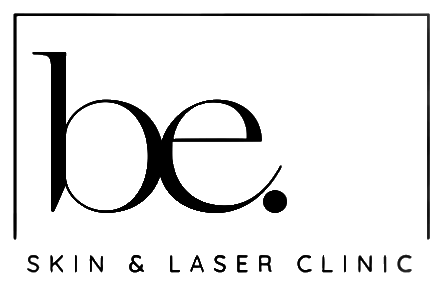Could skin tone be the deciding factor in your laser hair removal success? As laser hair removal continues to gain popularity, understanding the role of skin tone becomes crucial for achieving the desired results. This blog explores the profound influence of skin tone on the effectiveness and safety of laser hair removal treatments. By navigating through the intricacies of the Fitzpatrick Scale, learn how your skin tone interacts with different laser technologies. This understanding is essential to maximise outcomes and minimise risks, ensuring your journey to smooth, hair-free skin is effective and safe.
The Role of Skin Tone in Laser Hair Success
The Fitzpatrick Scale is a critical tool in laser hair removal, categorising skin into six types, from very fair (Type I) to very dark (Type VI). This classification is crucial as it guides the selection of appropriate laser technology. The primary determinant of laser hair removal success is the skin’s reaction to light, which is heavily influenced by melanin. Lighter skin tones, often categorised as Types I to III, typically have more laser options available. These traditional lasers effectively target the contrast between dark hair and light skin. Conversely, darker skin tones, Types IV to VI, require specialised lasers, such as the Nd:YAG, which can bypass the skin’s melanin, thus reducing the risk of burns and hyperpigmentation while ensuring effectiveness.
- Interaction with melanin: Varies across skin tones, influencing the laser’s ability to target hair follicles.
- Effectiveness variations: Lighter skin tones generally achieve better results with traditional lasers.
- Safety considerations: Darker tones are at higher risk of side effects with incorrect laser selection.
- Laser technology requirements: Specific lasers, like Nd:YAG, are essential for darker tones.
- Potential risks and side effects Include burns and hyperpigmentation, especially for darker skin when improper lasers are used.
Selecting the right laser technology based on skin tone is paramount. For darker skin tones, the Nd:YAG laser is preferred due to its longer wavelength, which penetrates deeper, bypassing the superficial melanin. This reduces risks and enhances treatment efficacy. For lighter skin tones, Alexandrite or Diode lasers are more effective due to their ability to target the pigment in hair against a lighter skin background. Understanding these nuances is vital to maximise safety and effectiveness in laser hair removal treatments.
Laser Technology for Different Skin Tones
Advancements in laser technology have significantly enhanced the effectiveness of laser hair removal across different skin tones. Selecting the appropriate laser type is crucial for achieving optimal results while minimising risks. Each laser type offers distinct advantages tailored to cater to the specific needs of varying skin tones.
Nd:YAG Laser
The Nd:YAG laser is particularly suitable for darker skin tones. Its longer wavelength allows it to bypass melanin in the skin and target the hair follicle directly. This feature reduces the risk of burns and hyperpigmentation, making it a safer option for individuals with higher melanin levels. The Nd:YAG’s ability to penetrate deeper into the skin enhances its effectiveness for darker skin types, providing a safer and more efficient hair removal process.
Diode Laser
The Diode laser is known for its versatility and effectiveness across various skin tones. It offers precision and safety by utilising a wavelength that can be adjusted to cater to different melanin levels. This adaptability makes the Diode laser a popular choice for individuals with varying skin tones. It ensures effective hair removal while minimising the risk of side effects. Its precision allows for targeted treatment, enhancing safety and results.
Alexandrite Laser
The Alexandrite laser is highly efficient for lighter skin tones, particularly those with dark hair. Its shorter wavelength targets the contrast between dark hair and light skin, delivering effective results. This laser type is ideal for individuals with skin types I to III on the Fitzpatrick Scale, as it maximises hair removal with minimal risk of skin damage. The Alexandrite laser’s focus on pigmentation contrast ensures effective hair removal for those with lighter complexions.
The Science Behind Laser Hair Removal and Skin Interaction

Laser hair removal operates on the principle of selective photothermolysis, where laser light is absorbed by melanin in the hair follicles. Melanin levels vary significantly across skin tones, influencing how effectively the laser can target hair. In individuals with lighter skin, there is a more excellent contrast between the hair and skin, allowing traditional lasers to target the hair follicle efficiently. Conversely, higher melanin levels in darker skin increase the risk of absorbing laser energy in the skin itself, leading to potential burns or pigmentation changes. Thus, understanding the interaction between laser light and melanin is crucial for tailoring treatments that balance efficacy with safety, ensuring that hair follicles are effectively targeted while minimizing skin damage.
- Melanin concentration: Affects how much laser energy is absorbed by the skin versus the hair.
- Hair follicle targeting: This is essential for effective hair removal; it depends on the laser’s ability to focus on melanin-rich follicles.
- Laser wavelength: Determines how deeply the laser penetrates the skin and its efficiency in targeting melanin.
- Skin protection strategies: Include cooling techniques and the use of specific laser types to safeguard the skin during treatment.
Laser technology advancements have significantly improved the safety and effectiveness of treatments for various skin tones. Modern lasers, such as the Nd:YAG and Diode, offer adjustable wavelengths and integrated cooling systems that protect the skin while delivering targeted energy to the hair follicles. These technological improvements enable practitioners to customise treatments, effectively managing the risks associated with high melanin levels in darker skin and enhancing overall treatment outcomes.
Expert Advice and Safety Tips for Laser Hair Removal
Anyone considering laser hair removal should consult with a dermatologist or laser specialist. These professionals provide personalised treatment plans tailored to individual skin tones and hair types, ensuring effective and safe outcomes. A well-informed expert can select the appropriate laser technology to significantly reduce the risk of side effects, such as hyperpigmentation or burns.
Pre-treatment consultations play a crucial role in assessing skin tone, influencing the choice of laser type. Dermatologists evaluate melanin levels and hair pigmentation during these assessments to determine suitable laser options. For instance, those with darker skin tones often recommend Nd:YAG lasers due to their ability to penetrate more profoundly and bypass melanin, minimising risks. Lighter skin tones might benefit from Alexandrite or Diode lasers, which target hair follicles effectively against a lighter skin background.
Post-treatment care is vital to maximise results and minimise potential side effects. Recommendations typically include avoiding sun exposure and using soothing creams to reduce inflammation. To prevent irritation, clients might also be advised to avoid hot showers and saunas for a few days post-treatment. Adhering to these guidelines helps maintain skin health and enhances the effectiveness of laser hair removal sessions, ensuring smoother and longer-lasting results.
Alternatives and Considerations for Different Skin Tones
Certain skin tones may be less suitable for laser hair removal due to higher melanin levels, which increase the risk of skin damage. Non-candidacy factors include incredibly light hair, such as blonde or grey, which lacks sufficient melanin for effective targeting by lasers. Alternative hair removal methods are recommended for individuals whose skin tones or hair characteristics make them unsuitable candidates for laser treatments. Options like waxing, electrolysis, hair removal creams, and threading can offer practical solutions without the risks associated with lasers. These alternatives cater to various preferences and skin sensitivities, providing flexibility for those seeking non-laser options.
- Waxing
- Electrolysis
- Hair removal creams
- Threading
Evaluating the effectiveness of these alternative methods is crucial for achieving desired results. Reviews of treatment effectiveness can vary widely, underscoring the need for tailored approaches. Each individual’s skin and hair characteristics are unique, and what works well for one person may not be as effective for another. Therefore, it is essential to consider personal factors and possibly consult a specialist to determine the most appropriate method, ensuring both safety and satisfaction in hair removal outcomes.
Final Words
Navigating The Role of Skin Tone in Laser Hair Removal Effectiveness involves understanding various factors, from categorising skin via the Fitzpatrick Scale to selecting the appropriate laser technology. The Nd:YAG, Diode, and Alexandrite lasers each cater to different skin tones, harmonising safety with effectiveness. Safety is paramount, especially for darker skin, where melanin interplay necessitates careful laser use. Consulting experts ensure personalised care, protecting skin and enhancing results. For those ineligible, exploring alternatives like waxing or electrolysis becomes vital. Armed with this knowledge, individuals can confidently pursue their skin confidence goals.
FAQ
Does skin tone matter for laser hair removal?
Laser hair removal effectiveness is influenced by skin tone. Lighter skin tones generally have more treatment options, while darker skin tones require specific lasers like Nd:YAG to ensure safety and efficacy.
What are the benefits of laser hair removal?
Laser hair removal offers long-term hair growth reduction, saving maintenance time. It provides a gentle solution for sensitive skin areas and reduces the risk of ingrown hairs.
What are the disadvantages of laser hair removal?
Potential drawbacks of laser hair removal include cost, the requirement for multiple sessions, and the possibility of temporary side effects like redness and irritation.
How does the Fitzpatrick skin type affect laser hair removal outcomes?
The Fitzpatrick Scale categorises skin tones and affects laser hair removal’s effectiveness and safety. It guides the selection of appropriate laser types to minimise risk and enhance results.
What makes laser hair removal effective?
Laser hair removal’s effectiveness hinges on precisely targeting hair follicles with laser energy. Proper selection of laser type for one’s specific skin tone is crucial for optimal results.
What is leukotrichia after laser hair removal?
Leukotrichia is a rare condition in which hair turns white or grey after laser treatment. This is due to changes in melanin within the hair.
How does melanin impact laser hair removal?
Melanin absorbs laser light, enabling hair follicles to be targeted. Higher melanin levels in darker skin necessitate specialised lasers to prevent skin damage while effectively reducing hair.
What role does laser technology play for different skin tones?
Different lasers, such as Nd:YAG, Diode, and Alexandrite, are suited for various skin tones, balancing effectiveness and safety to ensure optimal hair removal.
Is laser hair removal effective for hirsutism?
Laser hair removal can be an effective solution for reducing unwanted hair in cases of hirsutism. It offers a more permanent reduction compared to temporary methods like shaving or waxing.
Which laser for hair removal is most effective for varying skin tones?
Nd:YAG suits darker skin tones, Diode works across a broad spectrum, and Alexandrite is ideal for lighter skin with dark hair.
What are the pros and cons of laser hair removal?
Pros include long-lasting results and fewer ingrown hairs, while cons involve cost, multiple sessions, and potential temporary side effects like redness.
Does laser hair removal work better on pale skin?
Laser hair removal tends to have more options and higher effectiveness on paler skin due to the better contrast between hair colour and skin tone, which traditional lasers effectively target.
What are the potential risks and side effects of laser hair removal?
Possible side effects include temporary redness, irritation, and slight swelling. Using appropriate technology and qualified technicians minimises risks, particularly for darker skin tones.



